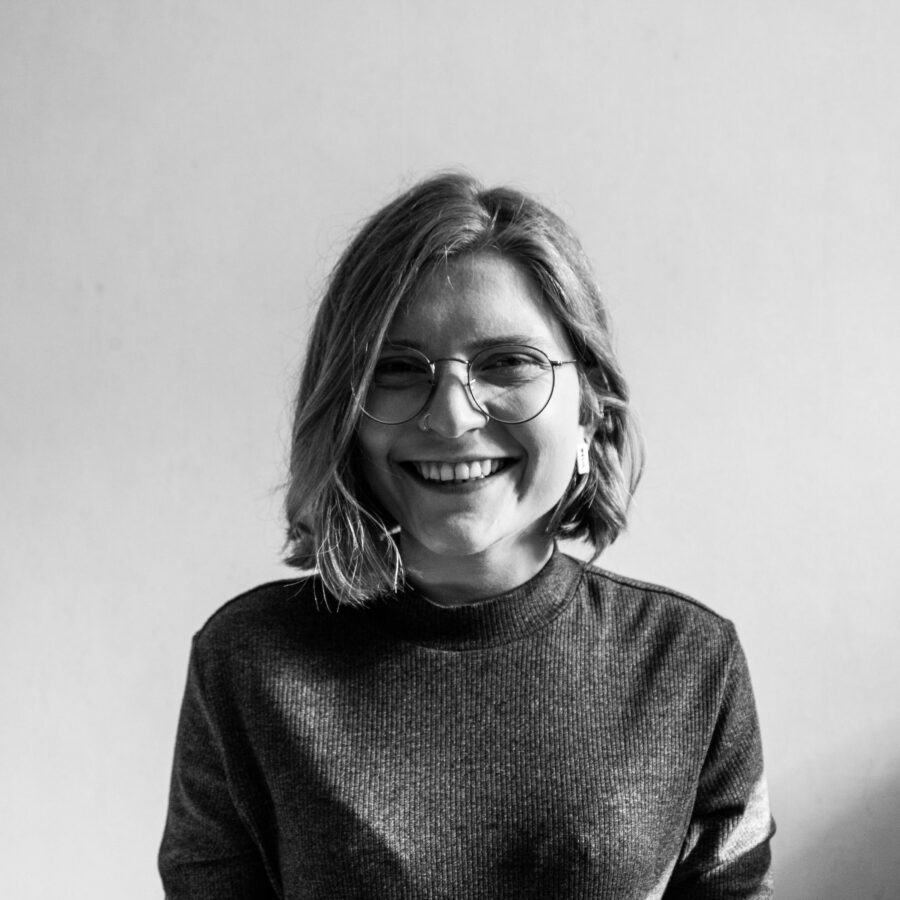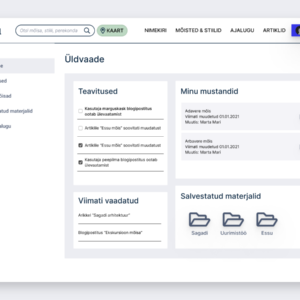
Ingrid Tärk.
New month, new form, new face – this time Ingrid Tärk, a 2nd-year digital product design student, filled in the product design form. Ingrid has linked her travel passion and design knowledge by being active in NGO Partner Up Estonia. In addition, she is one of the supervisors of industrial and digital product design workshops for high school students. For the April humour corner, it can be pointed out that if Ingrid had a special skill, it would probably be hiccups. To be more specific then there is Ingrid’s hiccup count at her desk in the students’ studio area at EKA, which illustrates her abilities with numerous records.
Name: Ingrid Tärk
Position: Project Coordinator (and person with many titles) at Partner Up Estonia
Relation to EKA: Second-year students of Digital Product Design
1. What projects are you currently working on?
As the 2nd year is almost coming to an end, there are fewer school projects at the moment. However, we are currently building our web portfolio. The professional portfolio is very much welcomed as an exchange student candidate at three Portuguese universities.
In addition to school, I am also active in my NGO Partner Up Estonia, under which we send young people abroad for youth exchanges and training through the Erasmus + program. We also have a youth exchange in Estonia in June, so a lot of work is going on there at the moment.
2. What is important in design, what is irrelevant?
It’s important to create a product that is actually necessary and solves or alleviates someone’s problem. With the aim of simply designing, the result is another non-functional product that essentially belongs to the (digital) landfill and we haven’t had room for these landfills for a long time.
In addition, I consider the ability to work in a team and receive criticism important. What matters is your own ego, which you must be able to swallow if necessary. I also feel all this when planning my youth exchanges. I can put together a program that I consider to be absolutely wonderful and working, but if a number of people still say that it doesn’t work, I need to be flexible and adapt the activities to their needs, without taking it personally.
3. What is your favorite step in product creation and what does it look like?
Good question. My favorite part is probably when I’ve been sitting at a loss for a long time, my head is empty of thoughts, and all of a sudden I find myself in this “ahhaa” moment – I come up with a good working solution or idea and I get ecstatic about it. It’s the excitement of what this product will end up being.
4. What has been your favorite project while studying at EKA? What did you discover during that?
I would like to highlight a game project we made in cooperation with the Estonian Museum of Natural History in the spring semester of the first year. I don’t orientate very well in the world of games, and I became obsessed with making a game in virtual reality, having not been in contact with VR at all. This project was scary at first. While others were already learning to write code in various programs, I was just figuring out how to make my own prototype. Finally, I found CoSpaces, a platform for creating a child-friendly 3D environment, where I completed my prototype very easily. I also like to point this out in product design workshops – a solution that seems complicated at first might have a very easy way to get there. You don’t have to learn any new skills overnight to express your idea. Paper and pencil are often sufficient.
5. How do you see the role of a designer in society in 10 years?
I’d like to hope that in 10 years’ time, the role of a designer will be a little more rooted in society. Companies hire designers by really knowing what designers are doing. Today, it’s still often in a vague status, and many people still find designers a little unnecessary. At times, the “we can do without” attitude occurs because of the ignorance of acknowledging what a designer’s work process looks like.
6. As a designer, I respect…
…people who are willing to work with us. Answer our simplest and stupidest questions and contribute their time. At the end of the day, we make products for them, not for ourselves, and their time is very important to us.
Did this offer you some food for thought?
You can contact Ingrid Tärk for questions via artun e-mail: ingrid.tark@artun.ee.




